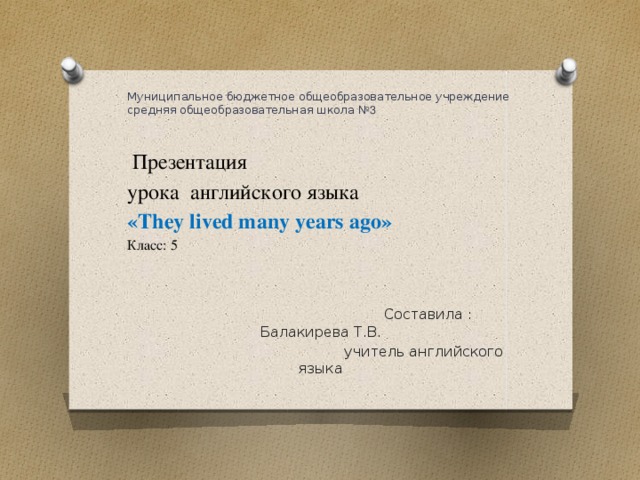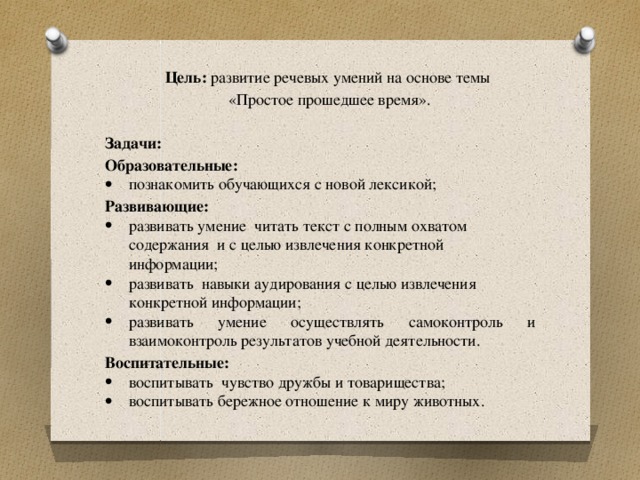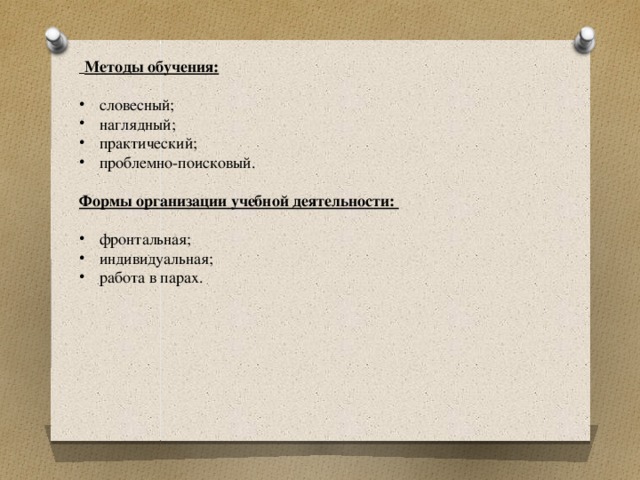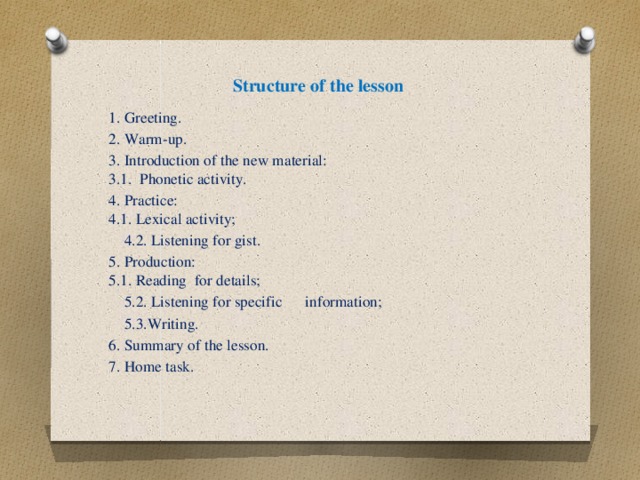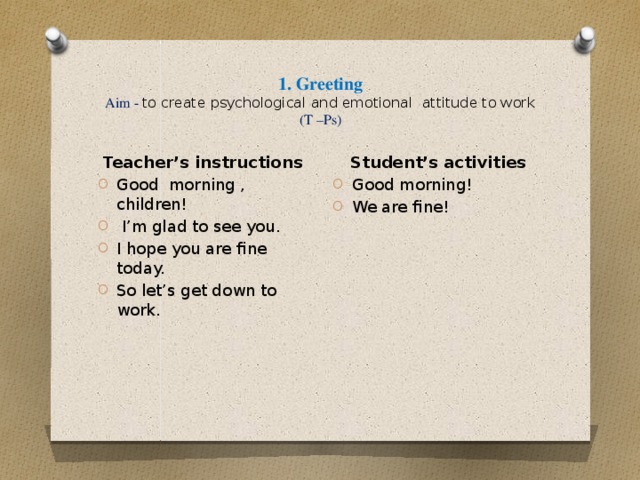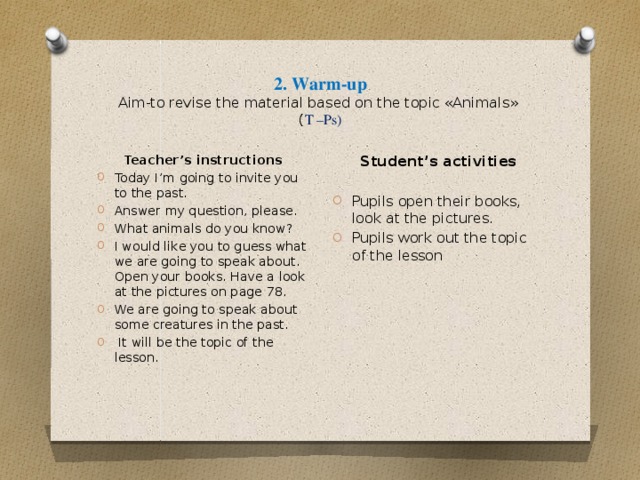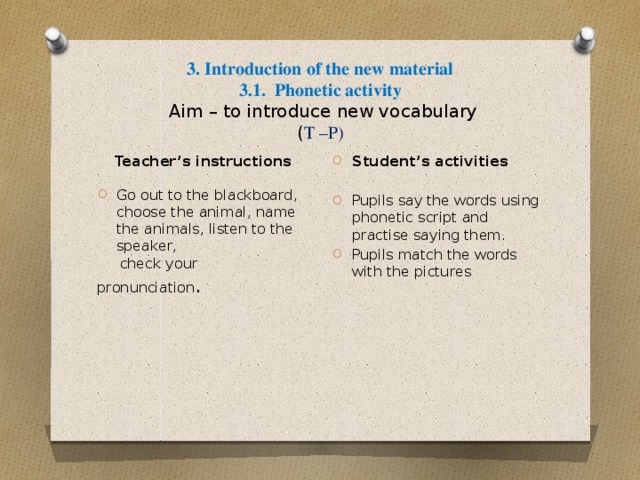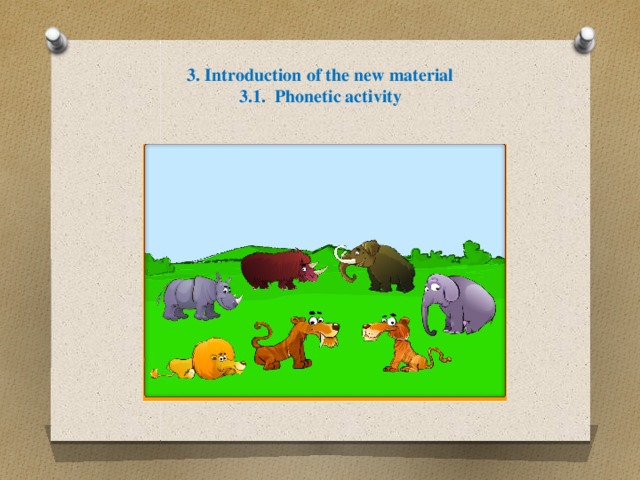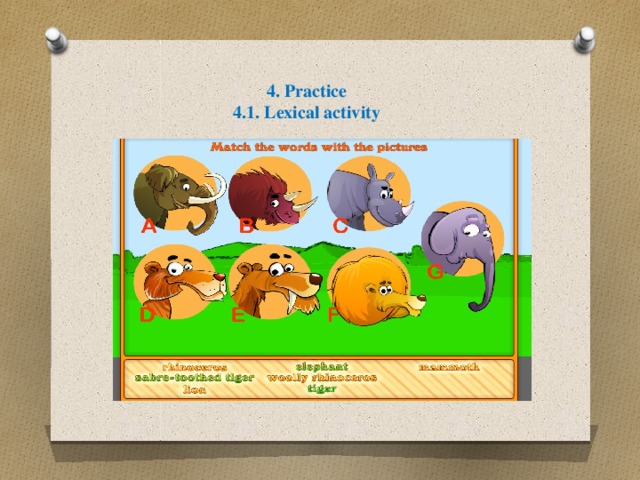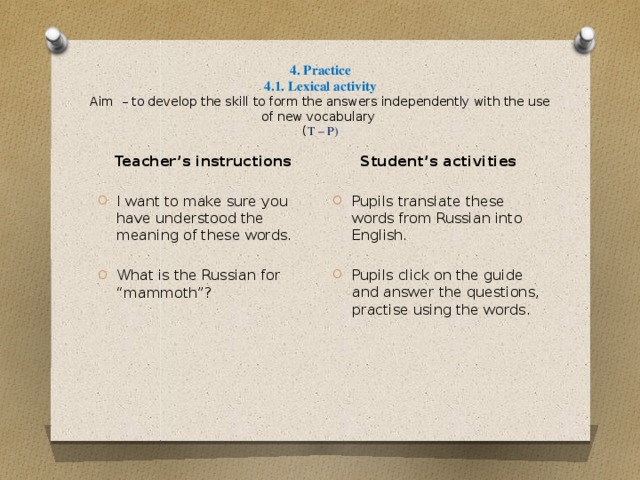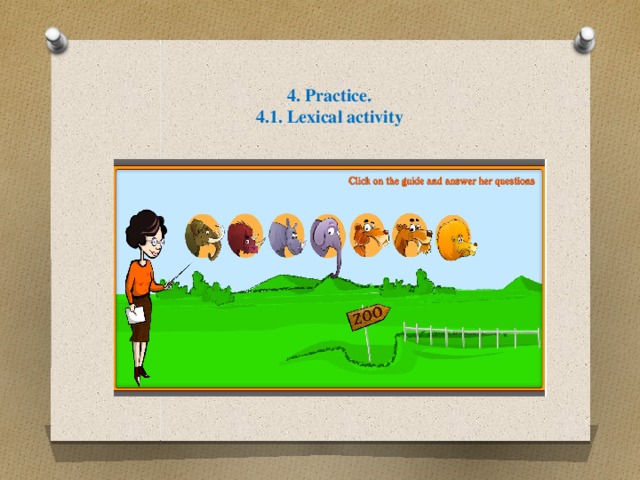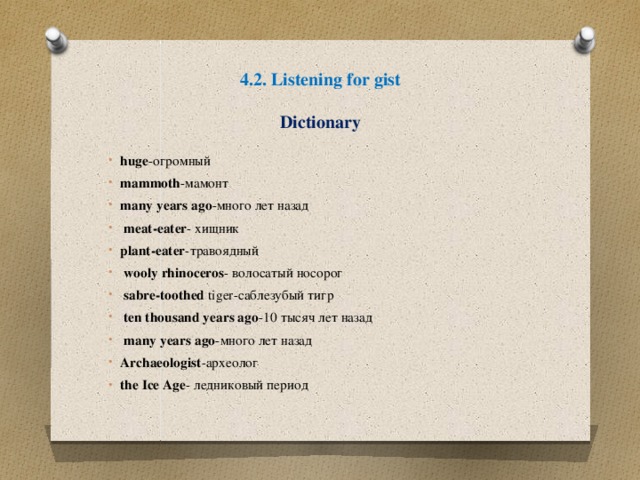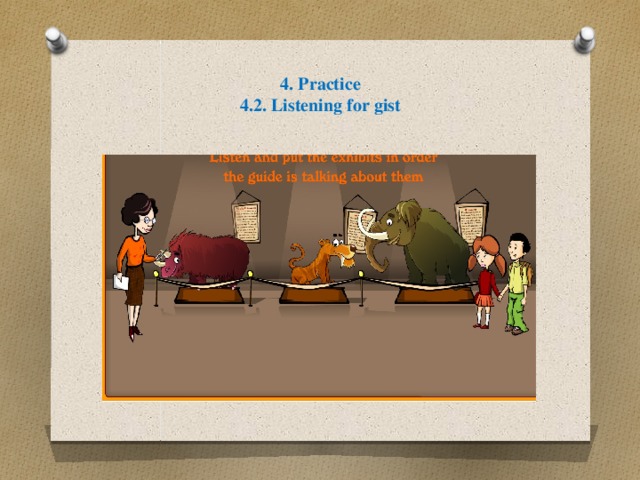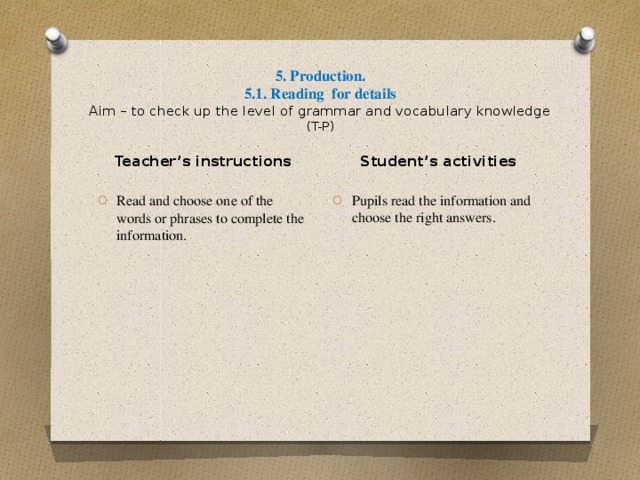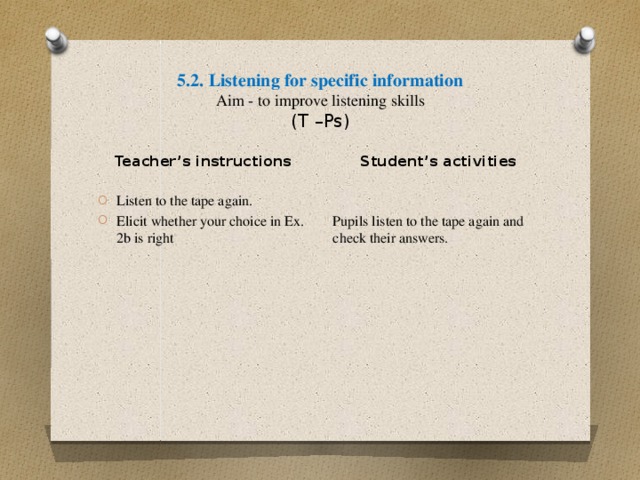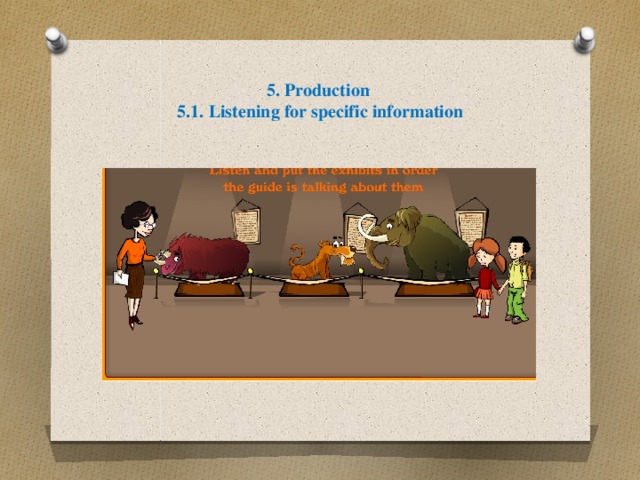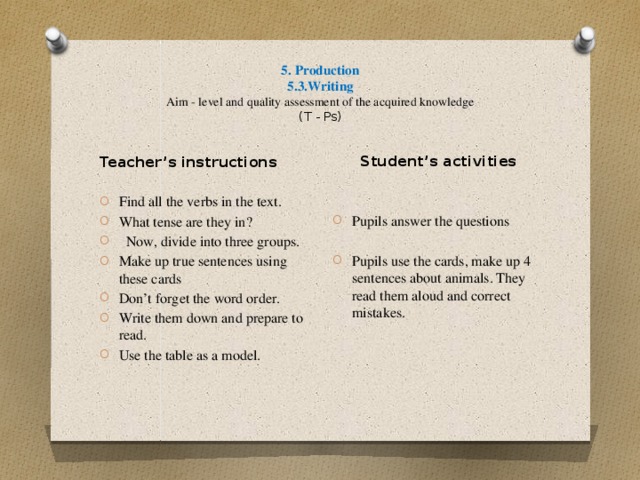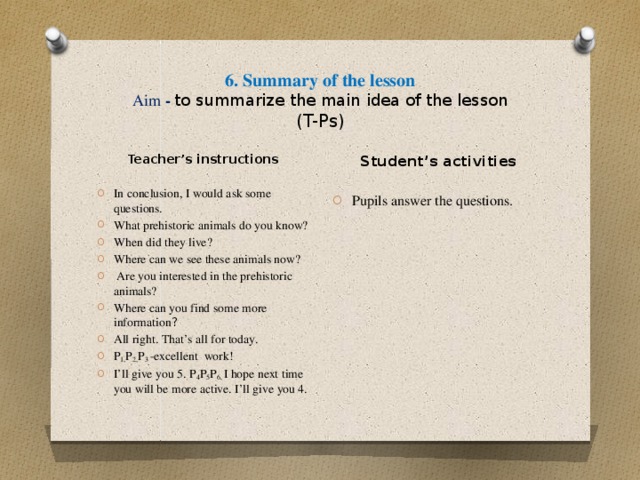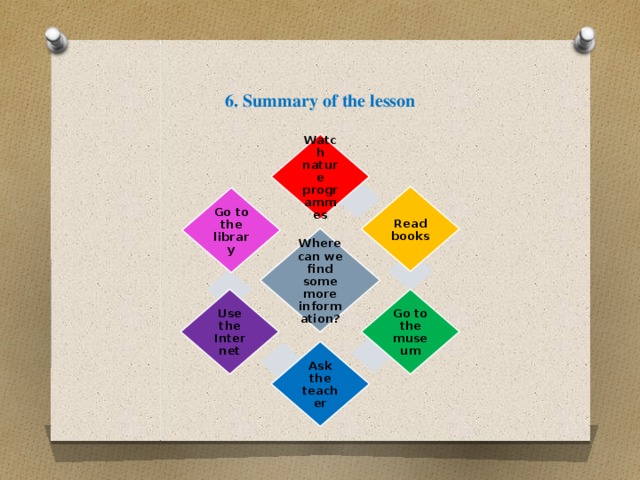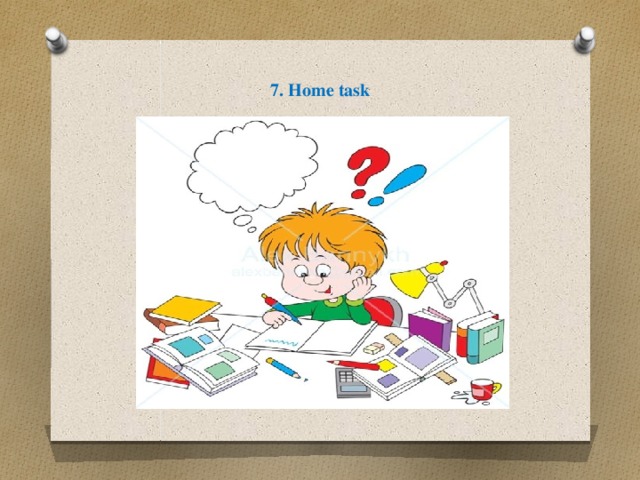Конспект урока с использованием информационно – коммуникационных технологий,которые активизируют учебную деятельность, повышают познавательный интерес, данный урок строится с учетом основных принципов дидактики: научности, доступности, личностного подхода, вариативности и наглядности. Каждый этап урока сочетается с выполнением конкретных учебных задач, соблюдены логические переходы с одного вида работы на другой. Урок входит в раздел «Много лет назад», на изучение которого отводится 6 часов. Данный урок является первым при изучении этого раздела. Продолжается разговор о видо-временных формах глагола, на уроке рассматриваются новые лексические единицы. Все последующие уроки будут направлены на изучение простого прошедшего времени и расширение лексического запаса по данной теме.
Создайте Ваш сайт учителя Видеоуроки Олимпиады Вебинары для учителей
Конспект урока английского языка, презентация для урока
Вы уже знаете о суперспособностях современного учителя?
Тратить минимум сил на подготовку и проведение уроков.
Быстро и объективно проверять знания учащихся.
Сделать изучение нового материала максимально понятным.
Избавить себя от подбора заданий и их проверки после уроков.
Наладить дисциплину на своих уроках.
Получить возможность работать творчески.
Просмотр содержимого документа
«Конспект урока английского языка, презентация для урока »
Похожие файлы
Полезное для учителя
Распродажа видеоуроков!
1610 руб.
2690 руб.
1610 руб.
2690 руб.
1610 руб.
2690 руб.
1610 руб.
2690 руб.
ПОЛУЧИТЕ СВИДЕТЕЛЬСТВО МГНОВЕННО
* Свидетельство о публикации выдается БЕСПЛАТНО, СРАЗУ же после добавления Вами Вашей работы на сайт
Удобный поиск материалов для учителей
Проверка свидетельства
